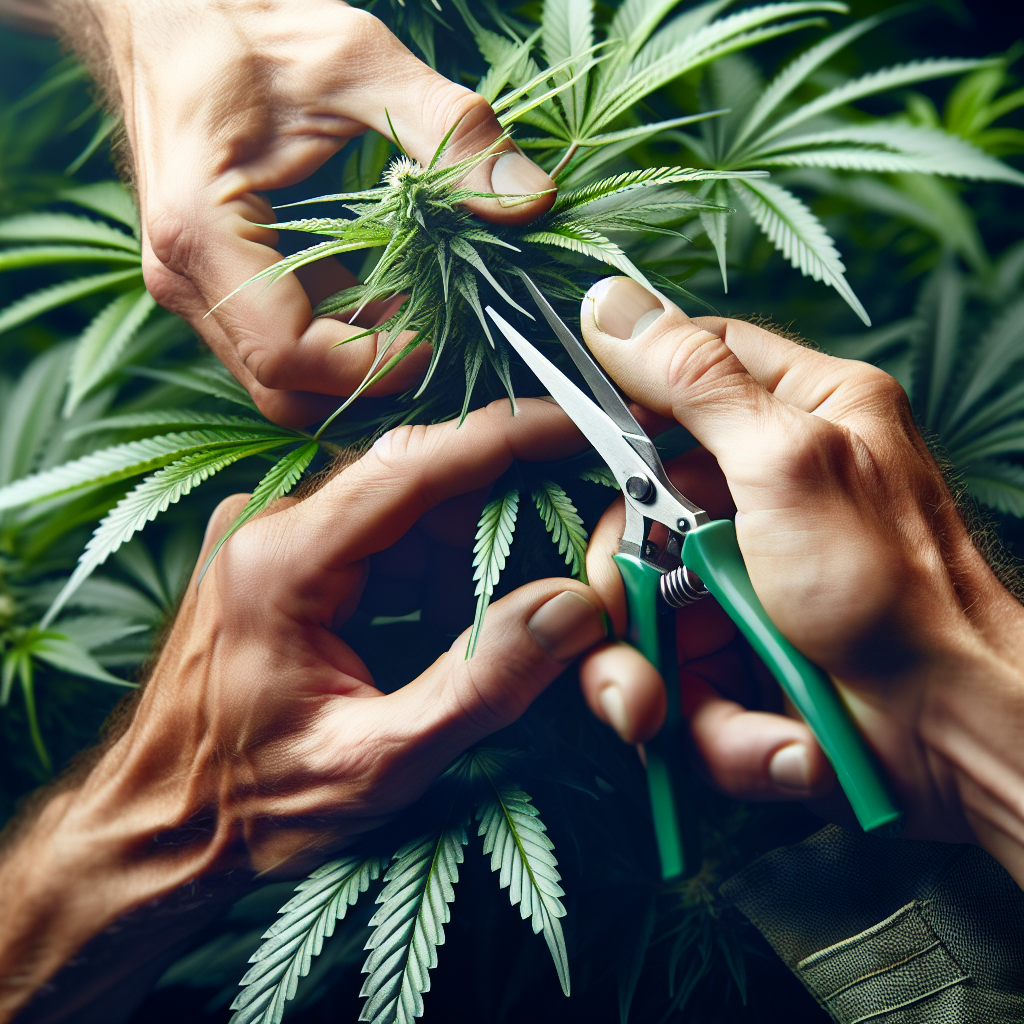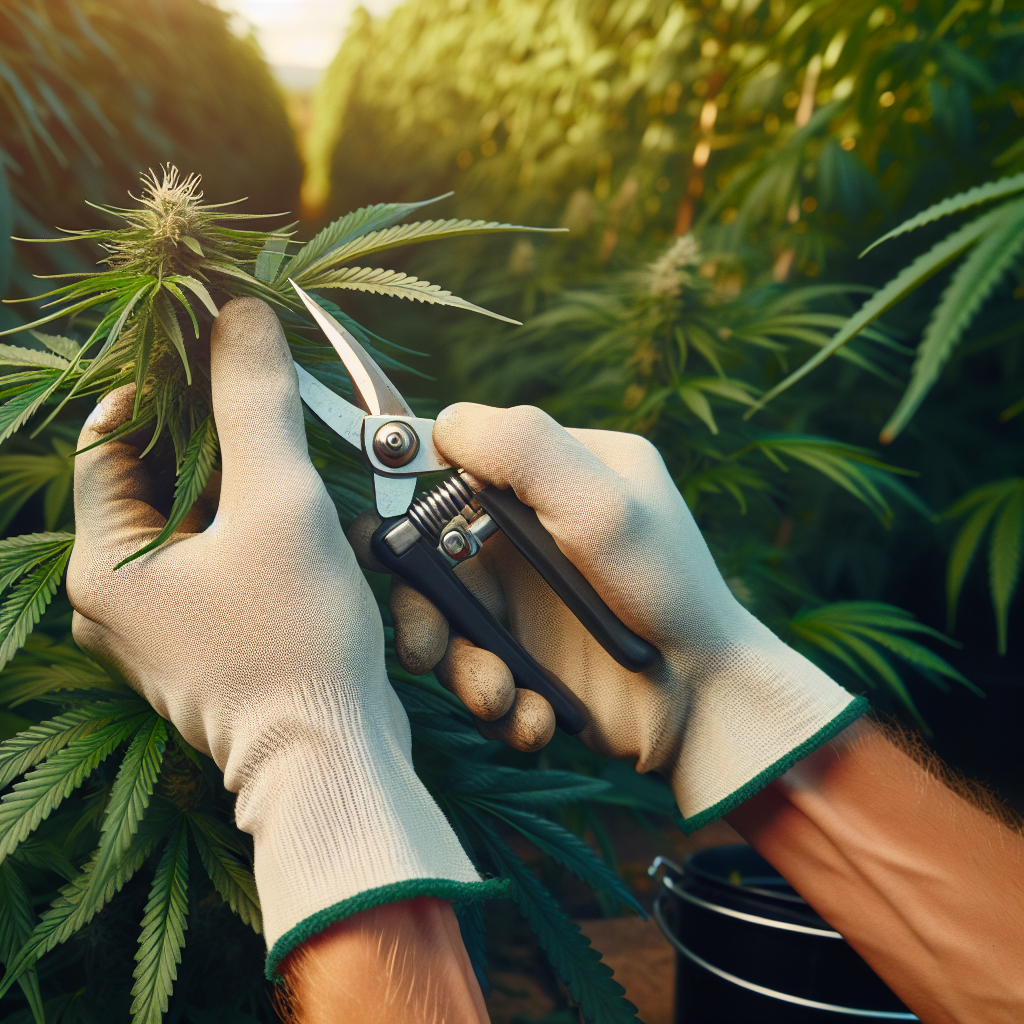Pruning And Training Cannabis Plants

Have you ever wondered how to optimize the growth and yield of your cannabis plants? Well, look no further! In this article, we will explore the art of pruning and training cannabis plants to help you achieve healthier and more productive yields. By carefully removing unwanted foliage and shaping your plants, you can promote airflow, increase light penetration, and encourage the formation of multiple budding sites. So, whether you’re an experienced cultivator or just starting out, join us as we unlock the secrets to achieving remarkable results through effective pruning and training techniques. Let’s get started!
Why Pruning and Training Cannabis Plants are Important for Growth
If you’re looking to maximize the growth and yield of your cannabis plants, then pruning and training should be on your to-do list. Pruning involves removing unwanted branches and leaves, while training focuses on manipulating the plant’s growth pattern. These techniques can significantly improve the overall health and productivity of your cannabis plants. In this article, we will explore the benefits of pruning and training, when to start implementing these techniques, and the tools you’ll need to get the job done.
Benefits of Pruning and Training
Pruning and training offer a range of benefits for cannabis plants. By removing any unwanted branches or leaves, you can redirect the plant’s energy towards more productive areas. This allows for better light penetration and airflow within the canopy, reducing the risk of mold and disease. Additionally, pruning helps maintain a manageable plant size, making it easier to control and monitor the health of individual plants. Overall, pruning promotes healthier growth, better quality buds, and higher yields.
Training, on the other hand, allows you to manipulate the growth pattern of your cannabis plants. By gently bending or tying down branches, you can encourage the plant to grow horizontally, rather than vertically. This horizontal growth creates a more even and uniform canopy, maximizing light absorption and promoting the development of multiple colas. The result is a higher quantity and quality of buds, as well as improved overall plant structure.
When to Start Pruning and Training
Pruning and training should be implemented during different stages of your cannabis plant’s growth. It’s important to note that these techniques are not recommended for seedlings or very young plants. Instead, focus on establishing a healthy root system and allowing the plant to develop a strong structure before introducing any pruning or training.
Once your cannabis plants have reached the vegetative stage, typically around 3-4 weeks after germination, you can begin pruning. Start by removing any large fan leaves that are blocking light from reaching the lower parts of the plant. This will encourage upward growth and prevent the development of “popcorn buds” in the lower canopy.
Training can also be initiated during the vegetative stage. As the branches become more flexible, you can start bending and securing them in desired positions. However, be careful not to apply too much pressure or stress to the plant, as it may result in damage or stunted growth. It’s important to monitor the plant’s response and adjust your training techniques accordingly.
Tools Required for Pruning and Training
To effectively prune and train your cannabis plants, you’ll need a few essential tools. These include:
- Pruning Shears: This tool is essential for cutting branches and leaves cleanly and precisely. Opt for a sharp pair of shears that can easily maneuver through the plant material.
- Secateurs: Similar to pruning shears, secateurs are ideal for trimming smaller branches and stems. They offer more precision when removing unwanted growth.
- Plant Ties: These flexible ties are used to secure branches in desired positions during training. They should be gentle enough not to damage the plant but strong enough to hold the branches securely.
- Trellis Netting: Trellis netting is useful for larger-scale operations or when training multiple plants. It provides a framework for the plants to grow through, supporting their weight and promoting horizontal growth.
By investing in these tools, you’ll be well-equipped to prune and train your cannabis plants effectively, ensuring optimal growth and yield.
Pruning Cannabis Plants
Removing Unwanted Branches and Leaves
Pruning cannabis plants involves carefully removing any unwanted branches and leaves. This practice not only improves airflow and light penetration but also allows the plant to direct its energy towards more productive areas. When pruning, focus on removing any branches or leaves that are shaded or competing for resources. This will help redirect the plant’s growth and promote more uniform development.
It’s important to note that not all branches and leaves should be pruned. The main branches, known as colas, should be left intact as they are crucial for bud development. Additionally, healthy fan leaves that are receiving ample light should also be preserved, as they play a vital role in photosynthesis.
Proper Techniques for Pruning
When pruning cannabis plants, it’s essential to use proper techniques to minimize stress and avoid damage. Follow these steps to ensure a successful pruning session:
- Start by sterilizing your pruning shears or secateurs. This helps prevent the spread of disease or pathogens.
- Identify the branches and leaves that need to be pruned. Focus on removing any shaded, damaged, or weak growth.
- Position the shears or secateurs at the base of the branch or leaf you want to remove. Make a clean, diagonal cut just above the node (the point where the leaf or branch connects to the stem).
- Avoid tearing or ripping the plant material, as this can leave wounds that are susceptible to infection.
- Clean up any fallen leaves or plant debris to maintain a clean and healthy growing environment.
Remember, pruning can be an ongoing process throughout the vegetation stage. Regularly assess your plants and remove any unwanted growth to ensure optimal health and productivity.
Pruning During Different Stages of Growth
Pruning techniques can vary depending on the stage of growth your cannabis plants are in. Let’s explore how pruning should be approached during different phases:
- Vegetative Stage: In the early vegetative stage, focus on removing large fan leaves that are blocking light from reaching lower parts of the plant. As the vegetative stage progresses, continue removing any shaded or weak growth to maintain a well-structured plant.
- Transition Stage: When your plants begin transitioning from the vegetative stage to the flowering stage, it’s essential to reduce pruning. At this stage, the plant’s focus shifts to bud development, and removing too much growth can hinder overall yield.
- Flowering Stage: Once your cannabis plants have entered the flowering stage, it’s best to avoid any major pruning. Removing large branches or leaves during this stage can disrupt bud development and reduce yield. Instead, focus on minor pruning to optimize light penetration and airflow.
By understanding the different stages of growth and adapting your pruning techniques accordingly, you can support healthy and productive cannabis plants.

Training Cannabis Plants
The Importance of Training
Training cannabis plants is an essential practice for maximizing yield and improving overall plant structure. By manipulating the growth pattern, you can create a more uniform canopy, increase light absorption, and promote the development of multiple colas. Training also helps manage plant height, making it easier to control and optimize growing conditions, especially in limited spaces.
Different Training Methods
There are several training methods you can employ to shape and guide the growth of your cannabis plants. Each method has its advantages and is suited for different purposes. Let’s explore some popular training techniques:
- LST (Low-Stress Training): LST involves gently bending and securing branches in a horizontal position. This technique encourages side branching and creates an even canopy. LST is suitable for maximizing light penetration and promoting an increased number of colas.
- SCROG (Screen of Green): SCROG involves weaving and securing branches through a horizontal screen or net. This method creates an even canopy and supports the weight of the plant as it grows. SCROG is particularly effective in maximizing light distribution and optimizing bud development.
- Topping: Topping involves removing the main apical bud (the topmost growth tip) to encourage the growth of multiple colas. This technique results in a bushier plant with multiple main branches. Topping is ideal for creating an even canopy and increasing bud production.
- FIM (Fuck, I Missed): FIMming is similar to topping, but instead of completely removing the apical bud, you pinch or cut off a portion of it. This technique stimulates the growth of multiple colas and promotes bushier growth.
Choosing the Right Training Technique
The choice of training technique will depend on your specific goals, growing conditions, and the characteristics of your cannabis strain. Consider the following factors when deciding which method to employ:
- Space: If you have limited vertical space, training techniques like LST or SCROG can help manage plant height and maximize use of available space.
- Light: Training methods that create an even canopy, such as SCROG or topping, are ideal for maximizing light distribution and ensuring consistent bud development.
- Strain Characteristics: Some cannabis strains naturally exhibit a bushier growth pattern, while others tend to stretch and grow tall. Consider your strain’s genetics and growth tendencies when choosing a training technique.
- Experience: If you’re a novice grower, it may be best to start with simpler training methods like LST or topping before venturing into more advanced techniques such as SCROG.
By carefully selecting the right training technique for your specific needs, you’ll be able to guide the growth of your cannabis plants effectively and achieve optimal results.

Conclusion Pruning And Training Cannabis Plants
Pruning and training cannabis plants are essential practices for maximizing growth, yield, and overall plant health. By removing unwanted branches and leaves through pruning, you can redirect the plant’s energy towards productive areas and promote better light penetration and airflow. Training techniques help shape and guide the growth pattern, creating a more uniform canopy and maximizing light absorption. By understanding the benefits, techniques, and timing of pruning and training, you’ll be well-equipped to cultivate healthy, productive cannabis plants. Remember to always adapt and adjust your approach based on the specific needs of your plants and the characteristics of your growing environment. Happy pruning and training!



